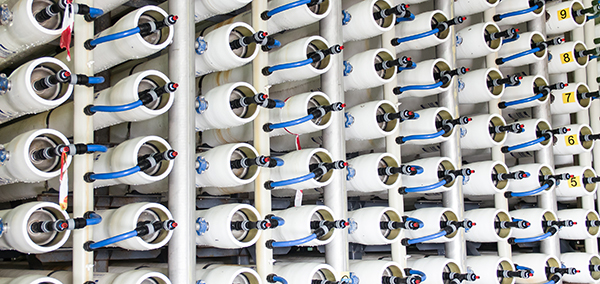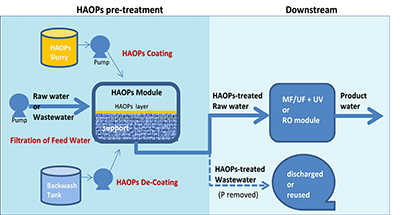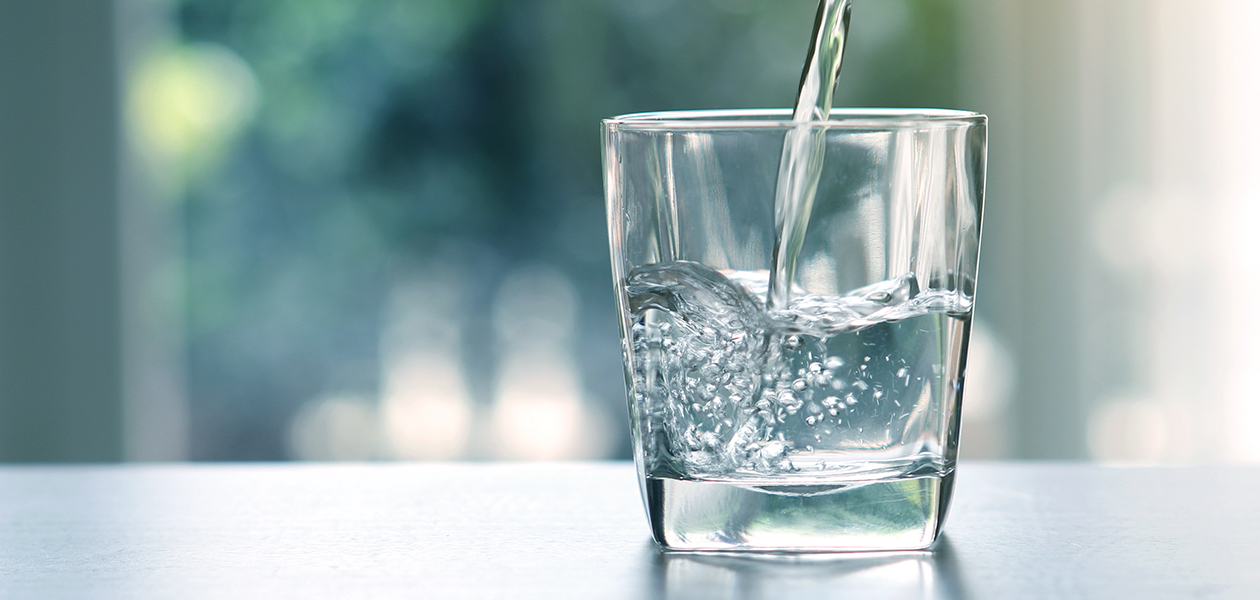Distilling water from waste
These TechOffers provide innovative water treatment solutions as part of needed answers to the problem of our dwindling supply of freshwater.
Look at a map closely and you may notice that a disproportionate number of cities are built close to sources of fresh water, be it a river or the sea. This is not a coincidence. Access to a water supply is crucial for the success of any settlement. Many sectors such as agriculture or even the oil and gas industries that power our cities depend on a steady stream of clean water for their daily operations.
While two-thirds of the Earth is covered in water, what we desperately need is freshwater—water from streams, lakes and rivers. However, freshwater is becoming an increasingly limited resource. Only 2.5% of all water on Earth is considered freshwater. Of this already short supply, only 1% is readily accessible; the rest locked in glaciers or ice sheets. To make matters worse, rampant environmental pollution is further reducing the little freshwater we have easy access to.
To keep up with the demand for water, companies are increasingly turning to technologies for desalination, water purification and wastewater treatment. In this month’s TechOffers, we feature three innovative solutions that address challenges faced in water treatment, helping to ensure enough clean water for generations to come.

Making desalination attractive
As the world population grows and urban settlements continue to expand, our wastewater output also increases proportionately. Solutions that can treat wastewater cheaply and efficiently are therefore highly sought after. A report from Meticulous Research predicts that the water and wastewater treatment market will be worth US$211.3 billion by 2025.
One promising approach to wastewater treatment is the use of forward osmosis technology; where a concentrated salt solution is used to draw clean water from contaminated sources across a semi-permeable membrane. Although it is energy efficient, forward osmosis requires the concurrent separation of the draw salt to produce clean water.
To overcome this challenge, a company has developed a proprietary switchable salt mixture that can be removed through moderate heating, leaving behind clean water as the final product. The evaporated gas can be recovered and recycled as fresh draw salt in a continuous closed loop process. The technology could extract up to 80% of the original waste volume as clean water, and could potentially be applied for desalination, oil and gas production.

For fouling-free filters
Many wastewater treatments apart from forward osmosis involve some form of membrane filtration. Unfortunately, the nature of filtration is such that contaminants deposit onto the membrane surface over time, blocking its pores and reducing its efficiency. This phenomenon is known as membrane fouling.
To tackle the problem of fouling, a company developed a pre-treatment technology for water using heated aluminium oxide particles (HAOPs). They found that HAOPs were effective in removing organic matter from water, significantly mitigating membrane fouling in subsequent filtration steps, prolonging the membrane’s lifespan.
The technology is also an efficient and cost-effective way of removing phosphorus, reducing its levels by 99.9% after treatment. Moreover, sludge generated from the pre-treatment was far easier to dewater, dry and dispose of compared to conventional methods, saving costs for transport and disposal in the process.

Separating what cannot be mixed
Separating liquids from each other is a widely used industrial process that is currently inefficient and energy consuming. In particular, separating complex liquid mixtures such as wastewater from chemical engineering or food-based industries is highly challenging.
Now, a company has developed a technique to turn almost any material into a filter than can separate immiscible liquids like water and oil. Involving the use of polydopamine nanoparticles, it works by modifying the roughness of a membrane to tune its ability to attract water.
When scaled up, this technology could be used to address pollution incidents like oil spills. In addition to being used to create separate liquids and oils, the ability to tweak a material’s roughness could also be used to make surfaces corrosion and ice resistant or even self-cleaning.

